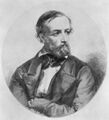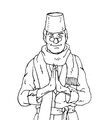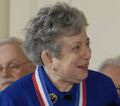Template:Selected anniversaries/February 13: Difference between revisions
No edit summary |
No edit summary |
||
| Line 24: | Line 24: | ||
||1880: Thomas Edison observes the Edison effect. | ||1880: Thomas Edison observes the Edison effect. | ||
||1883: Mathematician Henry Wilbraham dies. He is known for discovering and explaining the Gibbs phenomenon nearly fifty years before J. Willard Gibbs did. Gibbs and Maxime Bôcher, as well as nearly everyone else, were unaware of Wilbraham's work on the Gibbs phenomenon. Pic search yes: https://www.google.com/search?q=henry+wilbraham | |||
||1900: Abraham Plessner born ... mathematician. He published a paper containing what is now called Plessner's theorem, concerning the boundary behavior of functions meromorphic in the unit disk. Pic: https://www.geni.com/people/Abraham-E-Plessner/6000000000601380840 | ||1900: Abraham Plessner born ... mathematician. He published a paper containing what is now called Plessner's theorem, concerning the boundary behavior of functions meromorphic in the unit disk. Pic: https://www.geni.com/people/Abraham-E-Plessner/6000000000601380840 | ||
| Line 35: | Line 37: | ||
||1919: William Aaron Nierenberg born ... physicist who worked on the Manhattan Project and was director of the Scripps Institution of Oceanography from 1965 through 1986. Pic. | ||1919: William Aaron Nierenberg born ... physicist who worked on the Manhattan Project and was director of the Scripps Institution of Oceanography from 1965 through 1986. Pic. | ||
||1923: Chuck Yeager born ... American general and pilot; first test pilot to break the sound barrier | ||1923: Chuck Yeager born ... American general and pilot; first test pilot to break the sound barrier. (Alive July 2019.) Pic. | ||
File:Fay Ajzenberg-Selove.jpg|link=Fay Ajzenberg-Selove (nonfiction)|1926: Nuclear physicist [[Fay Ajzenberg-Selove (nonfiction)|Fay Ajzenberg-Selove]] born. She will do important experimental work in nuclear spectroscopy of light elements, authoring annual reviews of the energy levels of light atomic nuclei. | File:Fay Ajzenberg-Selove.jpg|link=Fay Ajzenberg-Selove (nonfiction)|1926: Nuclear physicist [[Fay Ajzenberg-Selove (nonfiction)|Fay Ajzenberg-Selove]] born. She will do important experimental work in nuclear spectroscopy of light elements, authoring annual reviews of the energy levels of light atomic nuclei. | ||
Revision as of 03:11, 11 July 2019
1787: Polymath Roger Joseph Boscovich dies. He was a physicist, astronomer, mathematician, philosopher, diplomat, poet, theologian, and Jesuit priest.
1805: Mathematician Peter Gustav Lejeune Dirichlet born. He will important make contributions to number theory, analysis, and mechanics. Dirichlet will be one of the first mathematicians to give the modern formal definition of a function.
1835: Mathematician, scholar, and crime-fighter Niles Cartouchian helps mathematician Peter Dirichlet break up math crime gang.
1910: Physicist and inventor William Shockley born. He will share the 1956 Nobel Prize in Physics for the invention of the point-contact transistor.
1911: Mathematician and crime-fighter David Hilbert publishes new synthesis of invariant theory and the axiomatization of geometry which detects and prevents crimes against mathematical constants.
1926: Nuclear physicist Fay Ajzenberg-Selove born. She will do important experimental work in nuclear spectroscopy of light elements, authoring annual reviews of the energy levels of light atomic nuclei.
1933: Physicist and engineer Karl Guthe Jansky uses radio astronomy antenna to detect and prevent crimes against astronomical constants.
1956: Mathematician and philosopher Jan Łukasiewicz dies. He thought innovatively about traditional propositional logic, the principle of non-contradiction and the law of excluded middle.
2017: Steganographic analysis of the famous Pale Blue Dot photograph unexpectedly reveals "nearly a terabyte" of encrypted data.








